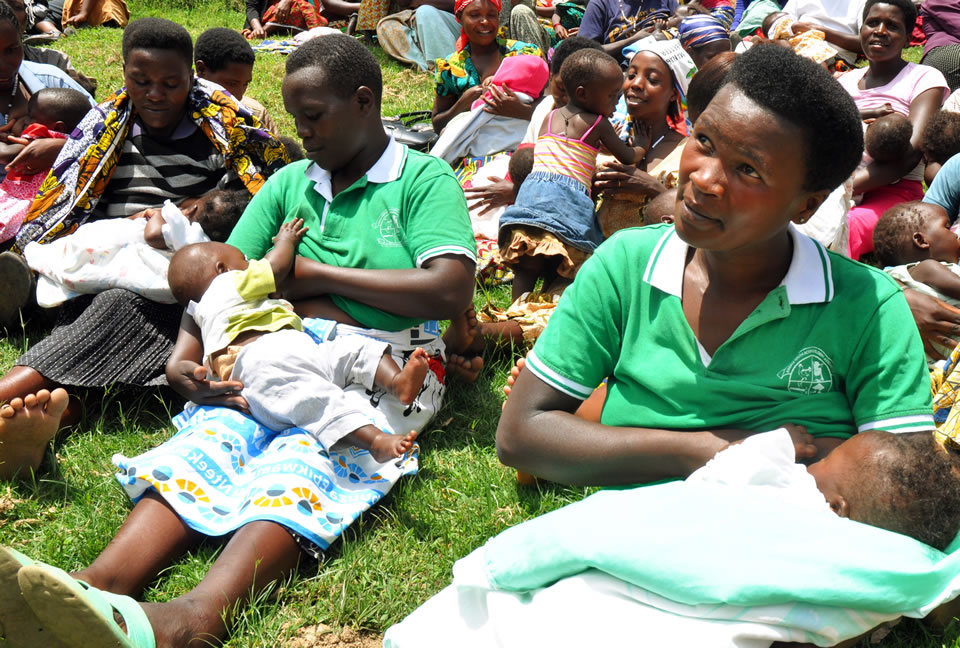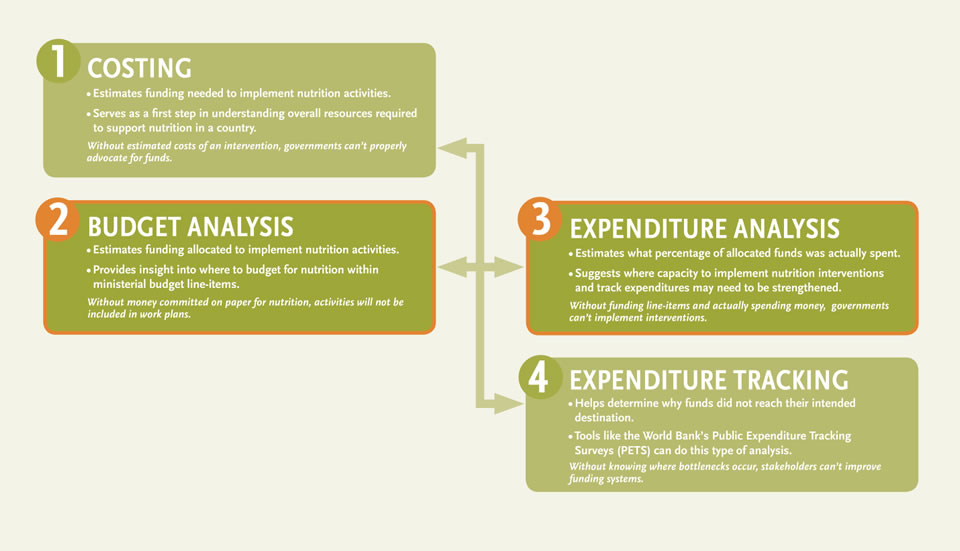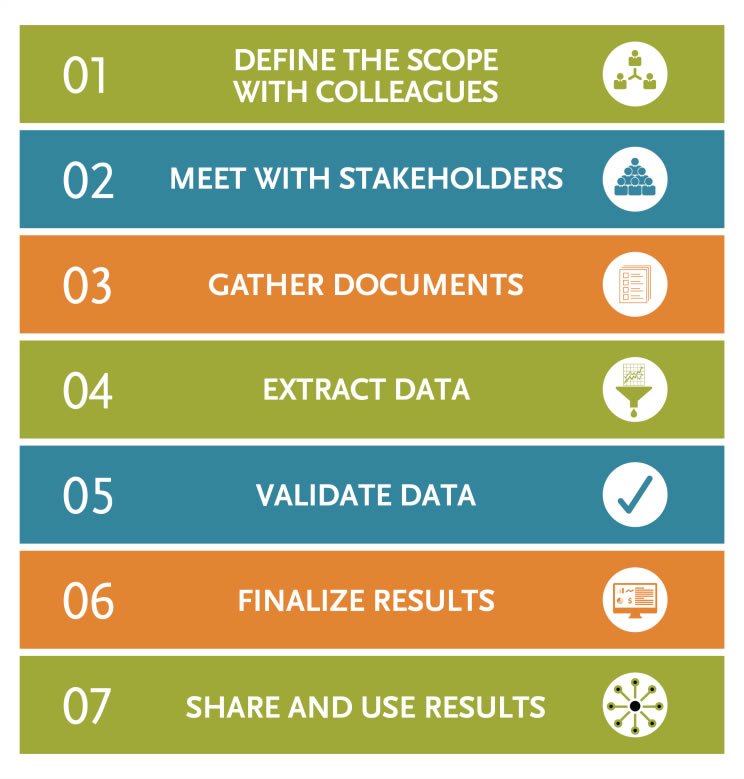- What We Do
- Agriculture and Food Security
- Democracy, Human Rights and Governance
- Economic Growth and Trade
- Education
- Environment and Global Climate Change
- Gender Equality and Women's Empowerment
- Global Health
- Humanitarian Assistance
- Transformation at USAID
- Water and Sanitation
- Working in Crises and Conflict
- U.S. Global Development Lab
Speeches Shim

At a Glance
- Nutrition Budget and Expenditure Analysis Supports the USAID Multi-Sectoral Nutrition Strategy
- How Does Budget and Expenditure Analysis Relate to Other Forms of Nutrition Financial Analysis?
- How Can Nutrition Financial Data Support USAID Efforts?
- Country Examples of Nutrition Budget and Expenditure Analysis
- Technical Resources on Nutrition Budget and Expenditure Analysis
- References
- Footnotes
View the PDF [PDF, 308KB].
Key Messages
- Country-level nutrition financing data are needed to support domestic resource mobilization for nutrition and to help coordinate donor resources.
- Nutrition financial tracking includes cost, budget and expenditure data. All three can be compared to strengthen the advocacy case for investing in nutrition.
- USAID country offices should provide country governments with technical support in analyzing financial data to ensure nutrition is not overlooked in the domestic budget cycle.
Box 1. Useful Definitions
Allocation: Planned funds approved for release by the Ministry of Finance or other central financial planning body.
Budget: National or organizational document that aligns resources with objectives.
Budget Analysis: The process of tabulating relevant budget data across different dimensions (e.g., economic or functional classification, sector, year).
Costing: The process of calculating how much a product or service will cost.
Expenditure: Funds actually spent on planned activities by the ministry or implementing agency.
Expenditure Analysis: Often using the same methodology as budget analysis, this process tabulates relevant expenditure data across different dimensions (e.g., economic or functional classification, sector, year).
Off-budget: Funds are run outside of the treasury and are not included in the regular government financial systems.
On-budget: Funds are run through the treasury; for donors, this means that their funded activity is included in government planning and budget documents.
High malnutrition rates can cost countries billions of dollars in lost productivity and health care expenses, yet nutrition interventions offer some of the highest potential for economic return of any international investment. Increased resource mobilization for nutrition is critical to address this issue. According to the World Bank, every U.S. dollar spent on nutrition-specific interventions provides a return on investment of up to $35 through increased cognitive and physical development and improved health (Shekar, et al., 2017).
Transparent, routine and timely nutrition financing data are needed at the country level to support domestic resource mobilization for nutrition and to help coordinate donor resources. Such information provides a roadmap for decision-makers to help overcome gaps in nutrition funds and inefficiencies in spending; make plans for expanding nutrition programming; and develop country-specific advocacy campaigns and investment goals. The 2016 Global Nutrition Report clearly states the importance of collecting these data, noting that doing so “leads to a far greater focus on results and helps make the case for additional investment.” At the same time, the report highlights the deficiency of effort in this area, acknowledging that “reporting on nutrition spending is patchy, at best, [and] governments and donors do not always take consistent approaches to tracking their nutrition spending” (IFPRI, 2016).
Although budget and expenditure analysis methods exist in other sectors, analyzing nutrition budget data poses a unique challenge. This is because nutrition funding is often spread across multiple ministries or agencies, is frequently integrated into larger accounting headings, and is implemented through several different stakeholders and mechanisms. Despite these challenges, the process of analyzing budget and expenditure data is still the best way to understand how much funding is being given to nutrition and how it is allocated. Regularly and purposefully searching budgets for nutrition activities can also increase dialogue about the importance of investing in nutrition for each sector (SUN Movement, 2015c). While countries must take the lead on developing routine monitoring of nutrition financing, global actors can support the development of budget and expenditure monitoring methodologies and increase local capacity.
This brief serves as an introduction to nutrition budget and expenditure analysis and to some of the resources available to countries for USAID, implementing partners, and other stakeholders supporting national nutrition programming and policies. Box 1 includes a set of definitions to familiarize readers with common financial terms.
Nutrition Budget and Expenditure Analysis Supports the USAID Multi-Sectoral Nutrition Strategy
Conducting budget and expenditure analyses supports USAID’s Multi-Sectoral Nutrition Strategy by increasing government and donor accountability and by providing a way to assess the cost effectiveness of nutrition spending. Specifically, analyzing budgets and expenditures can contribute to the following intermediate results (IR) within the strategy:
- Identify bottlenecks to effective spending of nutrition funding or opportunities to further catalyze spending (IR 1.2 and 1.3).
- Improve stakeholder participation in the budgeting process and provide opportunities for capacity-building of nutrition staff and their budget and planning counterparts (IR 2).
- Provide a framework for discussion and planning of nutrition programming (IR 2.4 and 3.2).
- Encourage sector- and sub-national level decision-makers to align allocations to priority nutrition activities (IR 2.3 and 3.2).
How Does Budget and Expenditure Analysis Relate to Other Forms of Nutrition Financial Analysis?
Analyzing nutrition budgets and expenditures is part of a process of tracking overall nutrition funding. This process begins with costing and ends with expenditure tracking (see figure 1).
Step 1 involves developing estimates of the financial resources (costs) required to complete an activity, service, or intervention. USAID’s brief on nutrition costing 1 can provide greater details on this topic. Step 2 and Step 3 are related: budget allocations (or the amount officially approved to be spent within the government budget) can be considered “planned spending” while expenditures measure actual spending. The techniques described in this brief can help countries complete these two steps.
Step 4 is a diagnostic exercise to track the flow of financing and identify the amount that reaches the service delivery level. Tools like the World Bank’s Public Expenditure Tracking Surveys 2 can be used for this final step.
Figure 1: Steps in Tracking Financial Support for Nutrition

While many governments have completed exercises to estimate the projected costs of nutrition plans or specific programs (step 1), fewer have completed the remaining steps outlined in this graphic.
How Can Nutrition Financial Data Support USAID Efforts to Strengthen, Improve, and Expand Host-Country Planning and Budgeting for Nutrition Service Delivery?
Analysis of nutrition budgets and expenditures is a wise investment. Without a consolidated approach to tracking budgets and expenditures, a multi-sectoral activity like nutrition can be overlooked, as sectors and departments may assume it is covered elsewhere. Furthermore, legislative bodies responsible for approving budgets may not know whether proposed allocations address all the relevant priorities. Finally, government and implementing partners may be unaware of existing funding that could be reallocated to have a greater impact on nutrition for the same amount of money. Through implementing partners, technical assistance to local governments and engagement with stakeholder platforms, USAID can support these transparency and advocacy efforts to:
- Determine funding gaps by comparing national budget allocations with cost estimates.
- Identify priority areas for government and donor focus by providing analyses of allocations and expenditures.
- Provide data for USAID in-country staff, host country governments and civil society nutrition champions to better advocate for more funding or better spending of existing allocations.
- Support the integration of nutrition resource tracking into routine country data systems.
- Encourage host country governments to be transparent and accountable in their spending of nutrition funding.
Key Considerations for Nutrition Budget and Expenditure Analysis
The multi-sectoral nature of effective nutrition programming means that the process of financial data collection and analysis is complex. However, a well-organized budget and expenditure analysis activity can provide detailed data for program planning, process improvement and increased coordination. Therefore, the planning stage is critical for building buy-in regarding methods and goals, and for gaining agreement on how to handle common methodological issues.
In some contexts, capacity for nutrition budget and expenditure analysis within government technical sectors may need to be built for this particular type of analysis. Effective nutrition budget and expenditure analysis requires participation by financial experts who are familiar with national processes as well as experts who are familiar with national nutrition strategies, plans and policies. Working with a team comprised of both skill sets who understand the local financial and programmatic processes will enable success.
Figure 2: Seven Steps to Nutrition Budget and Expenditure Analysis

Understanding nutrition definitions is one of the first steps to developing an analysis plan. National nutrition policies or plans should be used as a starting point, and if specific nutrition activity lists are not available, then stakeholders must decide (in consultation with those implementing nutrition activities) what framework to use for selecting activities to include in the analysis. Most countries follow the Lancet 2013 series definition of nutrition-specific activities, but there is also a wide array of nutrition-sensitive activities from which to choose. Clear, documented and defensible criteria for activity selection and search criteria should be developed to guide the analysis.
Documentation and reporting of allocations and expenditures may be limited, inaccurate or delayed, which has an impact on countries’ abilities to provide decision-makers with timely and relevant data. This means technical assistance providers must do their due diligence in identifying all forms of financial documentation. They may also need to build in time for more thorough data validation if there are extensive missing data. If routine information systems already track nutrition funding data at an acceptable level of quality, then this should be considered the primary data source. Otherwise, prioritize government-published financial data.
Understanding funding flows is necessary to make sure the team searches for the right information. Government funding is always run through the treasury and accounted for in national budget documents known as “on-budget” funding. External development partner (EDP) funding can also be on-budget, if it is run through government channels, and being aware of these distinctions is important. The rest of EDP funding is considered “off-budget,” and is managed outside of national financial systems. It may be more difficult to access information on these financial resources, although this funding stream can be quite substantial for nutrition. The private sector or civil society can also provide off-budget funding. Development Gateway’s Aid Management Portal, active in 25 countries, has begun to provide country governments with a more centralized way to track off-budget figures.
How to Conduct Nutrition Budget and Expenditure Analysis
Multiple methods have been developed for conducting a budget or expenditure analysis, but most rely on a basic three step process, developed by the SUN movement: 1) identify nutrition-relevant funding; 2) classify the funding by whether it is nutrition-specific or sensitive; and 3) if desired, allocate a weight to budget line items to develop final estimates (see endnotes for more information) (SUN Movement, 2015a).
Building on this process, the USAID-funded Strengthening Partnerships, Results and Innovation in Nutrition Globally (SPRING) project developed a step-by step guide for country planners and global researchers to use to accurately analyze budget and expenditure data (see Figure 2). Both this guide and the accompanying online tool are designed to be used by stakeholders interested in conducting budget and expenditure analysis, but who are without access to routine information systems for tracking nutrition financial data (SPRING, 2015).
Table 1. Nutrition Budget Analysis: Three Countries
|
|
Nepal |
Pakistan |
Guatemala |
|
Summary |
In Nepal, USAID collaborated with the Nutrition Planning Commission to analyze allocations and expenditures across six sectors (Pomeroy-Stevens, et al., 2016). |
In Pakistan, the government and SUN Movement used the SUN 3-step approach to identify allocations within the Benazir Income Support Program and the federal Public Sector Development Program (Shaheen & Kahn, 2016). |
In Guatemala, a 2013 national budget law protected allocations for the Zero Hunger Pact Plan (PPHO), mandating that the Secretariat for Food Security and Nutrition (SESAN) conduct regular reporting on PPHO expenditures. (SUN Movement, 2015b; Bulux, et al., 2014) |
|
What was tracked? |
|
|
|
|
When and how was it tracked? |
Yearly: 2013/14–2015/16 |
Yearly: 2013 to present. |
Monthly: Since 2012 All reports are shared on the government’s web-based System for Food Security and Nutrition Information, Monitoring, and Warnings. This process was defined by 2013 budget law. |
|
How were the results used? |
The National Planning Commission has said they will use the results for planning the next three-year plan, and budget estimates were integrated into the government’s recent presentation at the 2016 “Public Financing for Nutrition in Asia” workshop. The Ministry of Finance has also included a nutrition tracking category in the off-budget aid management portal. |
A combination of advocacy and this analysis has led to Pakistan allocating funds for nutrition-specific and nutrition-sensitive interventions at both national and provincial levels. The Economic Affairs division now has a database where nutrition allocations are tracked yearly. |
Real-time data on allocations and expenditures enables stakeholders to understand the connections among nutrition targets, budgets, and expenditures. Findings are used for political and administrative decision making. According to the 2016 Global Nutrition Report, the private-sector initiative Mejoremos Guate (We Will Improve Guatemala) used SICOIN data to assess the delivery of services for the prevention of chronic malnutrition to inform those in charge of implementation and advocate for improvements (IFPRI, 2016). Globally, Guatemala is seen as a leader in the area of routine tracking for nutrition budgeting and expenditures. |
|
Link to tools |
The tool and user’s guide can be the basis for data collection until longer-term adjustments are made within routine government monitoring systems (like has been done in Guatemala and Peru) (Victoria, et al., 2016).
Country Examples of Nutrition Budget and Expenditure Analysis
Given the current challenges noted, developing global spending targets or comparing cross-country spending should be approached with caution. That said, there are lessons to be learned from the current range of country experiences in conducting nutrition budget analysis. Nutrition stakeholders in Nepal, Pakistan, and Guatemala have all recently undertaken nutrition budget and expenditure analyses (see Table 1) using a variety of approaches.
The results, when used for management and advocacy, can lead to improved planning and even increased funding. By the end of 2017, 47 countries had responded to a call by SUN, and conducted an analysis of their government budgetary allocations and/or expenditures (SUN Movement, 2017a).
Technical Resources on Nutrition Budget and Expenditure Analysis
Finance Basics
- 20 key questions
- A Guide to Budget Work for NGOs [PDF, 533KB]
- Guide to Understanding and Using Inflation
Nutrition Financial Tracking
- SUN webpage on nutrition costing and financial tracking analysis
- SPRING Pathways to Better Nutrition webpage
- SPRING User’s Guide to the Nutrition Budget Analysis Tool
- Budget Analysis for Nutrition: guidance note for countries (update 2017) [PDF, 1.70MB]
- Tracking Government Investments for Nutrition at Country Level [PDF, 301KB]
- SUN Donor Network Resource Tracking [PDF, 251KB]
Nutrition Costing, Expenditure Tracking, and Audits
- The United Nation’s One Health Tool
- World Bank Report: Scaling Up Nutrition: What Will It Cost? [PDF, 1.57MB]
- World Bank webpage on Public Expenditure Review
- Findings from the Tanzania Nutrition Public Expenditure Review [PDF, 1.48MB]
- WHO webpage on National Health Accounts
- World Bank webpage on Public Expenditure Tracking Survey
References
Bulux, J., Velasquez, O., Juarez, C., Guillén, C., & Arriola, F. (2014). Tracking financial allocations to nutrition: guatemala’s experience: why is monitoring financial resources to nutrition so important? Washington DC, IFPRI.
International Food Policy Research Institute (IFPRI). (2016). Global nutrition report 2016: from promise to impact: ending malnutrition by 2030 [PDF, 4.9MB]. Washington, DC: IFPRI.
Pomeroy-Stevens, A., Shrestha, M.B., Biradavolu, M., Hachhethu, K., Houston, R., Sharma, I., & Wun, J. (2016). Pathways to better nutrition in Nepal: final report. Arlington, VA: Strengthening Partnerships, Results, and Innovations in Nutrition Globally (SPRING) Project.
Shaheen, M.A., & Khan, A.A. (2016). Field exchange: SUN experiences: lessons from Pakistan. ENN Website.
Shekar, M., Kakietek, J., Dayton Eberwein, J., & Walters, D. (2017). An investment framework for nutrition: reaching the global targets for stunting, anemia, breastfeeding, and wasting. Directions in Development--Human Development;. Washington, DC: World Bank.
SPRING (2015). User’s guide to the nutrition budget analysis tool. Arlington, VA: SPRING Project.
SUN Movement (2015a). Investigating nutrition in national budgets [PDF, 1.0MB]. Accessed May 27, 2017.
SUN Movement (2015b). Guatemala, in SUN Movement Annual Progress Report, 132–133 [PDF, 281KB].
SUN Movement (2017). Tracking nutrition investments.
Victoria, P., et al. (2016). Panel 7.1: Guatemala and Peru: timely access to financial data makes a difference in actual spending and spurs accountability at all levels. 2016. In Global Nutrition Report 2016: From Promise to Impact: Ending Malnutrition by 2030, p. 83. Washington, DC: IFPRI.
This Technical Brief will be periodically updated. Comments from readers are welcome to Leslie Koo, especially comments to help clarify the information provided or where additional information may be useful.
Footnotes
1 Nutrition Costing: Technical Guidance Brief
2 Tools and Practices 18: Public Expenditure Tracking Surveys [PDF, 27KB]

Comment
Make a general inquiry or suggest an improvement.